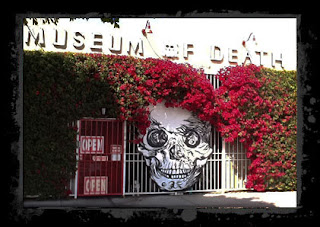The process of holding a book
and reading it is not the same as reading a pdf or other online version of the
material. https://www.quora.com/Whats-the-best-way-to-hold-a-book-while-reading
The only interactivity that happens with a book is inside the reader’s head
while digesting the information. On the screen, a reader searches for
interactivity, for graphics and links. Information may be there in shorter
bits. The reader’s hands are not positioned in the same way with a laptop or
desktop computer or mobile device as with a book. Whether one is better than
the other is debatable, but that physical difference does affect whether one
believes an experience is real or not.
But an online experience can
be immersive in ways a book cannot. Digital Karnak https://vsim.library.ucla.edu/xmlui/handle/20.500.11991/1012
and the Edinburgh project are examples of that, taking you back in time.
Online, a website visitor clicks away, picking and choosing bits of appealing
information. Karnak links don’t all work anymore; Daily Rituals, for example,
no longer has video. The site lacks sound, and the 35-second video that supposedly
shows visitors today is blank. Nevertheless, with what is available, a visitor
can process a “book” full of information much more quickly than reading a book.
People process images more quickly than text, unless the text is a big red STOP
sign or something similar.
The article that discussed the
aroma of new and old books in chemical terms was wonderful. Some people love
musty old books. Others won’t touch them. An online experience has no smell. It
is sanitized.
An example of real versus
non-real: During the Persian Gulf War in the early 1990s, British and American
television showed film of young pilots bombing enemy targets. They used technology
https://kids.britannica.com/students/article/Persian-Gulf-War/276372/206294-toc
and https://www.militaryfactory.com/battles/weapons-of-desert-storm.asp
that mimicked the video games the generation of pilots knew well-- talk about
blending real and non-real. Military training incorporated virtual reality for
soldiers learning combat for Afghanistan. Virtual reality came later to the
general public.
MAKING MUSEUMS FUN
Some go to museums for
reality, some for fantasy. Online, you get just a taste. There, you get text
and images and maybe more interactivity. An acquaintance told me she recently
went to The Museum of the Bible, but it was too much information, even though
she is religious. The museum does not charge admission, but does have a “ride”
of sorts, an immersive experience. https://www.museumofthebible.org/visit/current-attractions/washington-revelations
It cost $5. “This was the best part of
the museum,” she said. While she was telling me, her husband pulled out his
mobile and proceeded to show me the photos he took – about 50. “I liked the
Bible room, but all the signs everywhere were overload,” he said. “This way, I
can look at these tomorrow and understand what I saw.” For whom was that
experience more real? They both liked Nazareth Village. https://www.youtube.com/watch?v=y6rdjOVMYwg
Can a museum online experience
be real, the same as visiting the museum? The Washington area has some of the
best museums in the world. The National Air and Space Museum website present to
a visitor information on exhibits and objects, and that IMAX films are
available. There is no information about the virtual-reality rides, which any
visitor I’ve taken there has enjoyed. Like the no-admission Bible museum, you
don’t mind paying for this immersive reality, or for an IMAX movie. Jurassic
World, Fallen Kingdom may not sound like air-and-space museum fodder, but if
that’s what it takes to get someone to like a museum, why not? https://www.si.edu/Imax/
George Washington’s Mount
Vernon slave exhibit https://www.mountvernon.org/plan-your-visit/calendar/exhibitions/lives-bound-together-slavery-at-george-washingtons-mount-vernon/
is so popular that it has been extended. It is the opposite of flashy but
brings reality to the visitor. Research into the slaves who worked at the
estate is presented in their words, their lives from their viewpoints. This is
an example of mixing the non-real past with reality very effectively.
Colonial Williamsburg’s https://www.colonialwilliamsburg.com/
formula – costumed narrators, curators, old-time crafts, etc. – seems to be
replicated at many museums, whether they are a historic house or not. In my
opinion, the formula needs updating – but it is tricky to create a “real”
museum experience. Charging admission to present a short program on Alexander
Hamilton’s ties to the Washington area and inviting participants to try on
clothing similar to that worn in Hamilton’s time may be too immersive for some
museum-goers.
One of the best museums I have
visited is the Jorvik Viking Center https://www.jorvikvikingcentre.co.uk/
in York, England. There are smells both
pleasant and not, scares and surprises. The visitor can choose to be an observer,
merely reading signs and seeing objects, but participating in the full
immersive experience includes a train that loops through scenes from times past
(with latrine and animal smells), plus video, costumed staff, and interactive
exhibits. The website doesn’t have the same impact.
Check out http://www.museumofdeath.net/ and you are
probably, like this writer, glad that interactivity goes only so far.
Photo from Museum of Death website
With virtual reality, real and
non-real blend in museums https://unimersiv.com/virtual-reality-used-museums/
The reality is that not
everyone can get to good museums because of health problems, lack of money, or
other reasons. But they can visit the websites and judge how real the
experience is, something that could not be done 30 years ago. Digital reality bridges
the divide.

Good examples listed here. The virtual experience is also fine for those who hate driving and parking, battling crowds, fixed pathways.
ReplyDeleteOne thing that I wonder about is if the preference between real museum and virtual museum is gradually shifting over time and more and more younger users (children) grow up more fully engrossed in the digital world. I guess that we could look at gross attendance figures.
In my opinion, museums that put all of their collections and exhibits online are in trouble. The line between enticing people to the website and getting them inside the place grows thinner. However, "interactive" experiences both online and in the museum appeal to younger visitors.
ReplyDelete